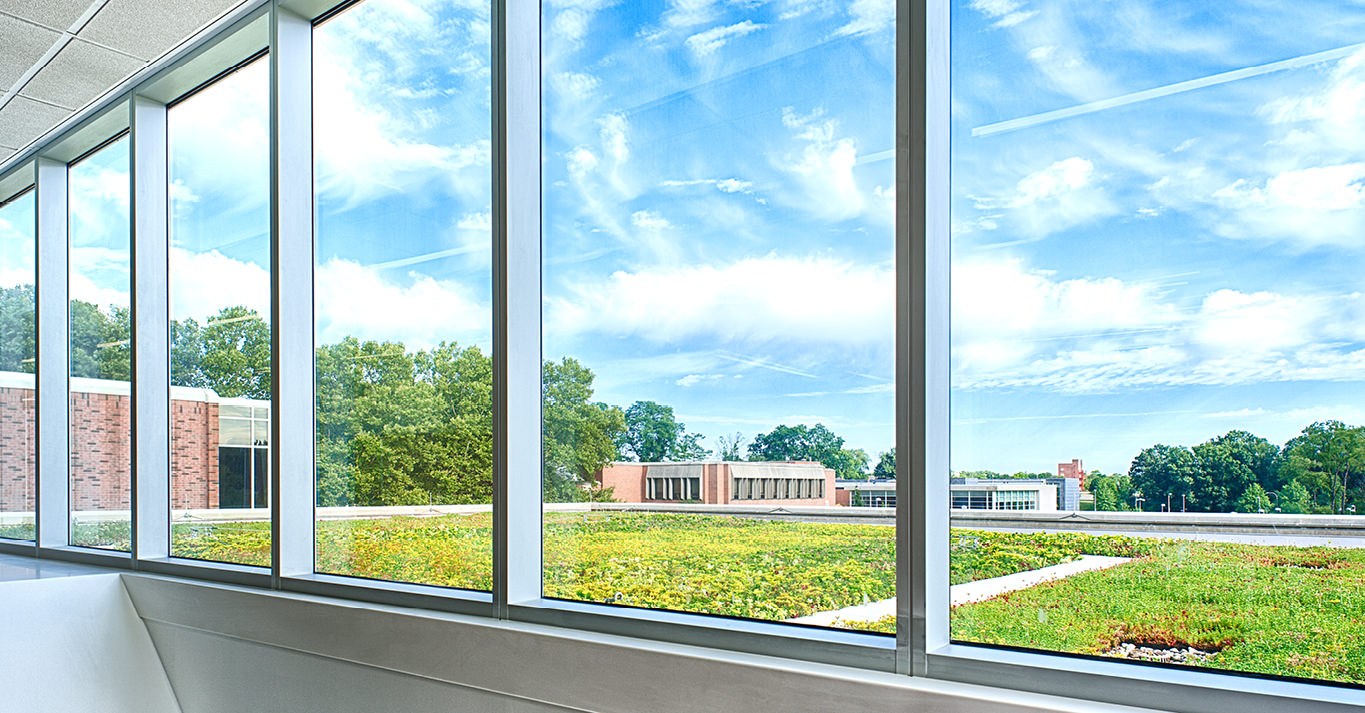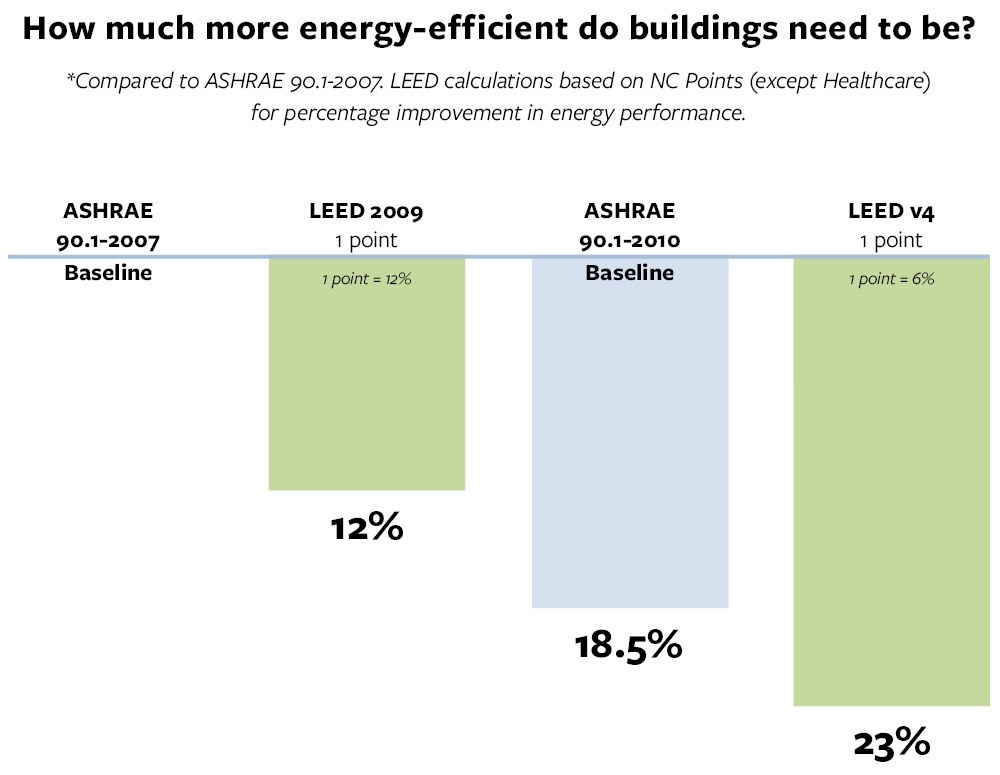What do LEED v4 and ASHRAE 90.1-2010 mean for building design?
By Joe Hofstetter | Oct 27, 2016

In the next few months, two changes to design standards are heading our way. Both have to do with energy efficiency. And if we embrace them, they could help us bring more innovative design to our communities.
First, There’s LEED Version 4.
The architectural and engineering community has been talking about LEED v4 since its release in 2013. Unless you were designing a project to meet LEED v4 standards, though, it probably hasn’t made much of an impact.
Now it will.
As of November 1, LEED v4 becomes the reigning rating system. It’s a substantial update, as others have discussed elsewhere.
LEED v4 raises the bar on building energy performance, adopting ASHRAE 90.1-2010 - Energy Standard for Buildings Except Low-Rise Residential Buildings. Though LEED has adjusted the point allocations, new buildings will still need to be at least 13% more energy-efficient than they were under LEED v2009 to begin earning points.
Second, in Ohio, There’s ASHRAE 90.1-2010.
Effective January 1, 2017, Ohio will update to the 2010 version of ASHRAE 90.1 (opens as PDF).
At first glance, that doesn’t sound particularly ground-breaking, given that the 2013 version of ASHRAE 90.1 is already out, and the 2016 version is underway.
But compared to the 2007 version, ASHRAE 90.1-2010 ratchets up the required energy efficiency for buildings. According to Pacific Northwest National Laboratory’s estimate for the Department of Energy, a code-minimum building will now need to be 18.5% more efficient than it was under ASHRAE 90.1-2007.

So What?
I think two points are important for the design community to understand and communicate to our clients.
Saving Energy Is a Whole-Building Effort
As technology improves, design standards adapt and keep us on our game.
A great example is LED lighting. LED has allowed us to achieve dramatic reductions in building energy consumption compared to baseline building allowances. Design teams have been able to leverage lighting efficiency to achieve better overall energy performance for a building or project.
Now, though, the energy efficiency gained through lighting has shrunk, when compared to the baseline. It’s a classic case of the code catching up with technology.
What does this mean for design?
Saving energy becomes more of a whole-building effort. We can no longer look to a single building system for extra energy savings. We also can’t expect budgets to be bigger, which would allow us to design the same way, just with more expensive components (e.g., windows, HVAC, insulation, etc.). We may be required to include components that were previously “extras” (e.g., energy recovery). And we can’t expect owners to accept less building for their money.
Design teams need to look at a building holistically – orientation, envelope, mechanical room location, duct and piping designs, and so forth – as we work to meet the energy code and design great buildings. I believe successful teams will need to incorporate give-and-take for energy efficiency in new ways.
That leads to my second point.
Collaborative Design Is the New Norm
Not only is saving energy a whole-building effort, it’s a whole-team effort.
As we pursue higher energy efficiency on similar project budgets, we do our clients a service by identifying the design elements that can have the largest impact on energy use, the project budget, and the operational budget.
Up-front collaboration can allow the design team to find energy savings in a budget-friendly way, rather than removing items from a project later in design or post-bidding.
Indeed, before design even gets underway, the construction manager who is setting the initial budget for a project needs to know the impact that LEED v4 or ASHRAE 90.1-2010 will have on pricing. Otherwise, there may be significant discrepancies at bidding.
LEED v4 speaks directly to the need for and benefit of a more collaborative approach, adding a credit for Integrative Process.
Further, coordinating design early and often simply makes sense. Many factors influence building energy use, and not all of them are under the A/E team’s purview. Factors such as process loads, plug loads, and building schedule and usage are all in the owner’s sphere of influence. To achieve energy benchmarks, these factors can no longer be ignored. The A/E team can draw the owner in, working together to identify relevant factors and map a path forward.
In the end, it’s not so much what the changes to the code are, but how we’re going to respond. The bar has changed. How are we going to build better buildings?